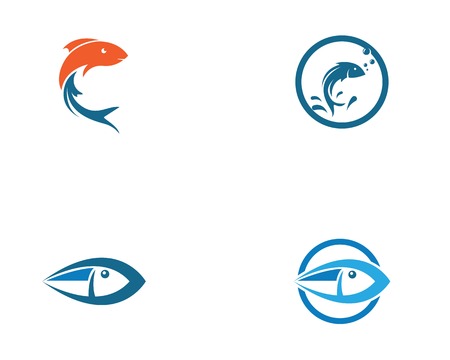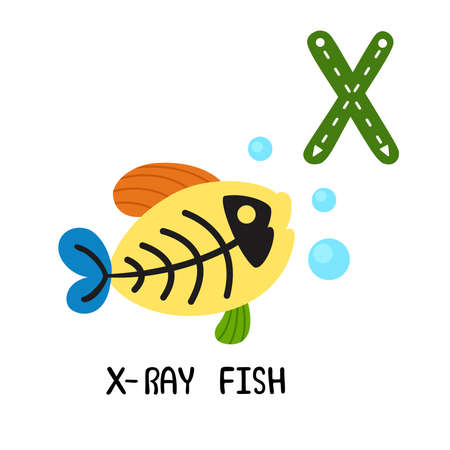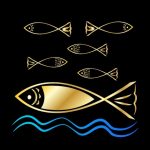1. Choosing the Right Materials for DIY Rod Holders
Building your own surf fishing rod holders is a great way to save money and customize your gear to fit your needs. Whether youre a weekend warrior or a seasoned beach angler, choosing the right materials is key to creating rod holders that are durable, lightweight, and able to withstand tough ocean conditions. Let’s explore some of the most popular materials used by surf anglers across the U.S.
PVC: Affordable and Easy to Work With
PVC pipes are a top choice for many DIY surf fishing enthusiasts. They’re inexpensive, widely available at any hardware store, and easy to cut and drill. A common setup involves using 1.5″ to 2″ diameter PVC pipes, cut at an angle on one end so they can be easily driven into sand. They’re lightweight and resistant to saltwater corrosion, making them perfect for the beach.
Aluminum: Lightweight but Strong
If you’re looking for something more heavy-duty, aluminum tubing is a solid option. Its more expensive than PVC but offers increased strength while still being relatively light. Aluminum rod holders can be mounted on carts or hammered into firmer sand areas using a pointed base. Just remember that working with aluminum may require extra tools like a hacksaw or metal drill bits.
Recycled Beach Gear: Eco-Friendly and Creative
Many anglers get creative by repurposing old beach gear like broken umbrella poles, tent stakes, or even golf club shafts. Not only does this save money, but it also keeps useful materials out of landfills. Just make sure any recycled material you use is sturdy enough to hold up against wind and waves.
Comparison of Common DIY Rod Holder Materials
| Material | Cost | Durability | Ease of Use | Saltwater Resistance |
|---|---|---|---|---|
| PVC Pipe | Low | Moderate | Very Easy | Excellent |
| Aluminum Tubing | Medium-High | High | Moderate | Good |
| Recycled Beach Gear | Free-Low | Varies | Moderate | Depends on Material |
Safety Tips When Building Your Own Rod Holders
- Wear safety goggles and gloves: Cutting PVC or metal can produce sharp edges and debris.
- Smooth all edges: Sand down rough cuts to prevent injuries when handling or transporting your holders.
- Avoid overloading: Even strong holders have limits—don’t try to fit too many rods in one holder.
Final Tip:
No matter which material you choose, always test your rod holders at home before hitting the beach. Insert your rod and simulate wave action or tugging from a fish to make sure everything stays secure.
2. Building Your Own Surf Fishing Cart
When youre planning a long day of surf fishing, having a solid beach cart can make a world of difference. Instead of dropping big bucks on a store-bought cart, you can build your own using affordable and easy-to-find materials like milk crates, PVC pipe, and wheel kits. Not only will this save money, but you can also customize it to fit your specific gear and local beach conditions.
Essential Materials for Your DIY Cart
Here are some basic items youll need to get started. Most of these can be found at hardware stores or even repurposed from stuff you already have in the garage.
| Item | Purpose |
|---|---|
| Milk Crate or Storage Bin | Main storage compartment for tackle, bait, and tools |
| PVC Pipe (1.5″–2″ diameter) | Rod holders attached to sides of the crate |
| Beach Wheel Kit (or Balloon Wheels) | Easy transport across soft sand |
| Axle Rod and Mounting Hardware | To secure the wheels under the crate |
| Bungee Cords or Straps | Secure extra gear or coolers on top |
| Drill and Screws | Assemble all parts together securely |
Step-by-Step Build Guide
Step 1: Set Up the Base
Start by choosing a sturdy milk crate or plastic bin as your base. This will act as the main frame of your cart. Make sure it’s large enough to carry your essentials but not so big that it becomes hard to pull through sand.
Step 2: Add the Wheels
If you’re fishing on soft beaches, regular wheels won’t cut it. Use balloon wheels or wide beach wheels designed for sand. Install them using an axle rod and mounting brackets secured to the bottom of your crate. Make sure everything is tight so the cart rolls smoothly without wobbling.
Step 3: Attach PVC Rod Holders
Cut sections of PVC pipe about 12-16 inches long and mount them vertically along the sides or back of your crate using screws or heavy-duty zip ties. These will hold your rods upright while walking or setting up.
Step 4: Customize for Your Gear
Add hooks, trays, or compartments inside the crate to organize tackle boxes, pliers, bait containers, and more. You can also strap a small cooler on top using bungee cords to keep drinks or bait cold throughout the day.
Pro Tip:
If you regularly fish in different spots with changing terrain, consider making your wheel assembly removable so you can switch between beach wheels and standard ones depending on where youre headed.
Why Go DIY?
A homemade surf fishing cart gives you flexibility—you decide how many rod holders you need, how much storage space to include, and what kind of wheels work best for your local beach. Plus, its a fun weekend project that’ll pay off every time you hit the shore.

3. Smart Setup Hacks for Shoreline Fishing
Setting up your surf fishing spot the right way can make all the difference between a slow day and a full cooler. These smart setup hacks are used by seasoned anglers to stay organized, detect bites faster, and adapt quickly to changing conditions along the shoreline.
Rod Positioning for Better Bite Detection
The angle and placement of your rod can greatly impact how well you notice a bite. Anglers typically use rod holders that keep the rod at about a 45-degree angle facing the surf. This allows your line to stay tight and makes even subtle tugs more visible. Using brightly colored rod tips or attaching small bells or bite alarms can also help you detect action when youre multitasking or relaxing nearby.
Rod Positioning Tips
| Condition | Recommended Rod Angle | Why It Works |
|---|---|---|
| Calm Surf | 30-45 degrees | Easier to see light bites with minimal wave action |
| Rough Surf | Higher angle (60+ degrees) | Keeps line above crashing waves, reduces slack |
| Night Fishing | Add glow sticks or bells | Aids in visual/audio bite detection |
Anchoring Techniques That Keep Your Gear Stable
Your DIY rod holders need to stay put in sand, especially when big fish strike. A simple hack is using PVC pipe holders cut at an angle at one end so they can be pushed deeper into the sand. For extra stability, some anglers drill holes through the PVC and insert metal rods or tent stakes crosswise like anchors. You can also bury a small sandbag or fill a bucket with wet sand to weigh down your gear cart or tackle box if wind is an issue.
DIY Anchoring Materials
| Material | Use Case | Pro Tip |
|---|---|---|
| PVC Pipe (2”–3” diameter) | Main rod holder body | Add notches for reel clearance and better grip on rod butt |
| Tent Stakes or Rebar | Add-on stabilizers for holder base | Create cross-bracing to prevent tipping under pressure |
| Buckets/Sandbags | Tackle cart anchoring in windy areas | Bury halfway for extra hold in loose sand |
Tackle Organization for Quick Adjustments by the Surf
The last thing you want is to fumble through your gear while fish are biting. Organize your tackle based on usage frequency: keep sinkers, leaders, hooks, and pliers within arm’s reach. Use small plastic bins or tackle trays mounted inside your DIY cart, or attach labeled pouches with Velcro straps to the sides. A cutting board on top of your cart makes bait prep fast and clean.
Tackle Cart Essentials Checklist:
- Pliers (hook removal, crimping)
- Bait knife & cutting board surface
- Labeled tackle trays (hooks, weights, swivels)
- Sunscreen & first aid kit in waterproof pouch
- Towel or rag for hand cleaning
- Cup holders (for drinks or soaking rigs)
A little prep goes a long way when fishing from the shore. These simple setup tricks save time, reduce hassle, and help you land more fish with less stress.
4. Storage and Transportation Tips
If youre going the DIY route with your surf fishing gear, knowing how to store and transport your homemade rod holders, carts, and other setup hacks is just as important as building them. American anglers often hit different beaches, so having portable and beach-friendly storage solutions makes a huge difference.
Make It Collapsible
One of the smartest moves you can make is designing your DIY gear to be collapsible. Think folding rod holders, detachable cart wheels, or stackable tackle bins. This not only saves space but also makes it easier to load and unload from your vehicle.
Use Vehicle-Friendly Designs
Most surf fishermen in the U.S. use SUVs, trucks, or vans to reach their favorite fishing spots. Designing your gear to fit neatly into these vehicles can save time and hassle. Here’s a quick guide for what fits best in common types of vehicles:
| Vehicle Type | Recommended Gear Design |
|---|---|
| SUV | Foldable carts, compact rod racks that strap to roof or inside cargo area |
| Pickup Truck | Slide-in rod tubes, stackable crates, removable cart wheels for flatbed storage |
| Van | Slim-profile carts, vertical rod holders mounted to interior walls |
Beach-Ready Containers and Bags
Don’t forget about how you pack smaller items like bait knives, sinkers, rigs, or pliers. Use weather-resistant tackle bags or plastic bins with lids that snap shut—perfect for tossing in the back of your truck without worrying about sand or moisture getting in.
Pro Tip:
Add a few bungee cords or tie-down straps to your kit. They come in handy for securing your gear during transport and even keeping things steady on windy beach days.
Label and Organize Your Gear
If you have multiple DIY pieces (like different size rod holders or specialized carts), label them clearly so you know what’s what before heading out. A little organization goes a long way when youre eager to catch that early morning tide!
Simple Storage Checklist:
- Collapsible or foldable parts?
- Fits easily in your vehicle?
- Weather-resistant containers?
- Labeled and organized?
- Bungee cords or straps packed?
By keeping storage and transportation in mind while building your DIY surf fishing gear, you’ll spend less time packing and more time fishing. That’s the kind of beach lifestyle every American angler can get behind.
5. Safety and Maintenance for Homemade Equipment
When youre out on the beach with your DIY surf fishing rod holders, carts, and custom setups, keeping your gear safe and in good shape is just as important as catching fish. Saltwater and sand can quickly wear down even store-bought equipment—so homemade gear needs a little extra love. Heres how to keep everything working smoothly and safely.
Preventing Saltwater Corrosion
Saltwater is no joke—it eats away at metal, weakens joints, and causes rust if not cleaned off properly. To keep your DIY rod holders and carts lasting longer:
- Rinse after every trip: Hose down all parts with fresh water immediately after your day of fishing.
- Dry completely: Let everything air-dry or use a towel before storing it to avoid moisture buildup.
- Use anti-corrosion spray: Products like WD-40 or marine-grade sprays help coat metal surfaces and prevent rust.
Dealing with Sand Damage
Sand may seem harmless, but it can grind into moving parts, scratch surfaces, and cause jams. Keep it under control by:
- Avoiding direct contact: Set up your cart or rod holder on a mat or tarp when possible to minimize sand exposure.
- Cleaning moving parts: Use a soft brush or compressed air to get sand out of wheels, hinges, and pipe connections.
- Lubricating joints: Silicone-based lubricants work great for keeping PVC or metal parts moving smoothly even after sandy exposure.
Routine Safety Checks
Your homemade gear doesn’t come with a warranty, so it’s up to you to catch problems early. Here’s a simple checklist you can follow before each trip:
| Component | What to Check | How Often |
|---|---|---|
| PVC Rod Holders | Look for cracks or loose joints | Before every use |
| Carts (Wheels & Frame) | Tighten bolts, check wheel rotation | Weekly or after rough terrain |
| Bungee Cords/Straps | No fraying or overstretching | Monthly |
| Metal Parts (if any) | No signs of rust or corrosion starting | After each saltwater trip |
Troubleshooting Common Issues
- Squeaky wheels? Apply silicone spray—avoid petroleum-based lubes that attract more sand.
- PVC coming loose? Re-glue joints with marine epoxy for better hold in wet conditions.
- Carts tipping over? Redistribute weight evenly and widen the base if needed using add-on stabilizer bars.
A Quick Tip from Local Surf Anglers
“Wrap foam pipe insulation around sharp edges or handles—it gives you better grip and protects your hands when hauling gear across hot sand.”
With regular care and some smart tweaks, your DIY surf fishing setup will stay reliable season after season—and save you money while doing it!

